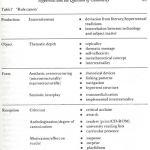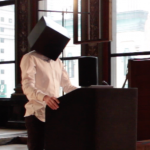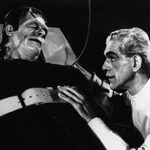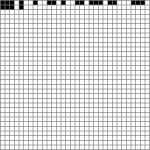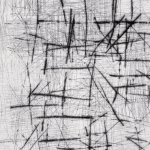2014
Scott Rettberg's essay, "An Emerging Canon?", highlights the potential for macroanalytic approaches to literary study, specifically in the field of electronic literature. Through his study of the richly populated ELMCIP Knowledge Base, Rettberg analyzes the impact that specific works have had within scholarly and creative communities, and enumerates the potential benefits that this work might have for the preservation, study, and understanding of the field.
In "Nature's Agents," Lisa Swanstrom discusses the agency of objects operating within networks. Specifcally, Swanstrom addresses works which allow nature to correspond with humans in a shared environment, posing provocative questions about the idea of agency itself as expressed in an ecology of action.
This essay is excerpted from Swanstrom's monograph, Animal, Vegetable, Digital: Experiments in New Media Aesthetics and Environmental Poetics (under contract to be published by the University of Alabama Press).
Maria Engberg reviews two books that describe the dialectical relationship between literary production, digital media, and literary reception from opposite ends of the historical and aesthetic spectrum. "Literary paleontologist" C.T. Funkhouser examines the born-digital poetry of the 1950s (and earlier), while Johanna Drucker writes an eye-witness account of the contemporary encounter between print literature, humanities research, and "speculative computing."
In the following essay, Luciana Gattass discusses the formation of a Brazilian Electronic Literature Collection via analysis of works identified in the ELMCIP Knowledge Base. Positioned between the existence of geographical data and the question of a national literature, Gattass considers the role of the human critic in the age of big data.
In this ambitious piece, which was initially presented at the 2013 Paris meeting of the Electronic Literature Organization, John Barber examines the role of sound in born digital literary works. Identifying, initially, the rich history of sound art and radio drama, Barber goes on to probe the untapped potential of digital audio as a field for future development. Anticipating John Cayley's 2018 essays on Aurature in electronic literature, Barber in this essay sees sound moving into the foreground of a transformed literary experience, rather than just augmenting text based literary acts.
In this essay, Janez Strehovec explores the literary from the “nomadic cockpit” everyday life in the 21st Century. More than merely being cocooned by screens, Strehovec’s metaphor describes the way in which our travel through the environment is layered with navigational data, environmental surveillance, communication systems, and tied into a dynamic feedback loop. From this vantage point, Strehovec considers a number of works of digital art and electronic literature that are written precisely to be read in motion, to explore the sensations of life in the nomadic cockpit.
In “One + One = Zero,” Marjorie C. Luesebrink discusses “fleeting” messages and their implications for electronic literature. Beginning with a discussion of the popular social media app, Snapchat, Luesebrink considers a series of works of electronic literature that employ tropes of vanishing and inaccessibility to represent forgetfulness, limited perception, and the challenges posed by dynamic environments for contemporary readers. After tracing a path through two decades of digital practice, Luesebrink points to a future in which the vanishing text will continue to be a relevant site for literary innovation.
The "electronicness" in literary writing, Ian Hatcher suggests, is more of a cognitive disposition, an atmosphere or condition that is present regardless of the print/screen/pen(cil)/paper medium one inhabits.
Commenting on the high price of long term literary collaboration (and the brevity of most funding in the Humanities), Samantha Gorman asks if it's necessary for arts practitioners today to create commercial start-ups. Can scholars and Digital Language Arts entrepreneurs find a way to bring literary work into "hybrid communities" and "outreach"?
How does the electronic literature community continue to develop? Amaranth Borsuk looks towards the print literature community, and suggests that we adopt a number of its most successful practices.
One of several early career participants at the Electronic Literature Organization's Summer 2012 "Futures" panel, Claire Donato comes down on the side of non-commercial, non-entrepreneurial, educational approaches to an emerging digital literary practice.
For Patrick LeMieux, the future of electronic literature is not before us, and instead entails an investigation of the past--of the unknowable territories we collaborate with through e-lit.
What are we to make of current calls for "practice based" research in the Digital Humanities and e-lit fields? What about "art as research"? Stephanie Boluk sounds a caution concerning the ways that literary studies are being worked into the "instrumentalization and corporatization of the university system."
In his video-poem "Reading the Wind," Dave (Jhave) Johnston identifies the current environment for electronic literature, and in doing so, claims the impossibility of knowing its future.
Natalia Fedorova claims sees the future of electronic literature in translation: just as translation from her native Russian to English can teach us about both of those languages, translations between "natural languages" and "languages of code" can clarify what makes electronic language literary.
Recalling ebr's early exploration into "green" and "grey" ecologies, invisible etchings on silicon and massive environmental consequences, Ben Bishop calls our attention to questions of "power" at the heart of our newly digitized critical and creative practices: "Not clout or capability, but electrical power generated by spinning turbines."
The practice of Electronic Literature has long raised questions about literary form, literary content, the author, the reader, the moment of publication, and the artifact itself. The companion to the lifecycle of the work in its ecosystem, of course, is the editorial vision itself. In this essay, Sandy Baldwin and Tiffany Zerby call for editors and publishers of works on and about e-lit to become active participants in the process of creating the entire work and in creating the field around wo...
Giorgio Agamben has identified the “State of Exception” as the emergent principle of governance for the 21st Century. Parallel to this crisis in politics, there is the increasing currency of the term emergence in literary criticism, media theory, and cultural studies to describe the general state of change. In this paper, Heckman considers electronic literature in the "state of emergency," as both a laboratory for formal innovation and a site of critique. Specifically, this paper takes into account the relationship between literacy, law, literature and criticism through a reading of Sandy Baldwin’s New Word Order, a work that reimagines poetry in the context of the first-person shooter game.
Brian Kim Stefans proposes the need for a resistance to the "free play" associated with electronic writing, and discusses how this resistance will elevate electronic literature for both the author and the reader. He argues that poetic discharge is comparable with excess and bodily disgust, citing Sianne Ngai, and Steve McCaffery's "North of Intention." Stefans argues that avant-garde excess must be based on a balanced reflection on authorial presences. He draws his argument from his work on The Scriptor Project, which was inspired by his desire to bring "digital textuality back to the drama of the hand making marks on the page - literally dramatizing the act of writing by hand, the plays of body and mind that are erased in standard typography."
2013
Chris Funkhouser and Andrew Klobucar situate the poetry anthologized in the recent collection "Gnoetry Daily, Vol. 1: a collection of poetry written interactively with computers" within a long genealogy of computer aided writing in order to illustrate how that genealogy continues to be both aesthetically generative and socially significant.
